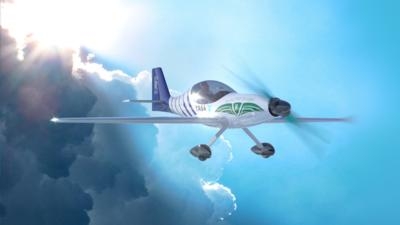'Accelerating The Electrication of Flight' Project (ACCEL) Targeting Speeds In Excess Of 260 Knots
What do you get when you combine the finest talent in aerospace engineering, Formula E auto racing, and high-power battery development?

The answer is sitting in a hangar bay tucked toward the back of a rural airfield, Gloucestershire Airport, two hours west of London. Propped on a waist-high platform, it’s a humble-looking 12-foot carbon-fiber airplane chassis possessing an outsized ambition.
Once complete, this plane, the centerpiece of Rolls-Royce’s ACCEL initiative, will be different from anything else you might find at Gloucestershire airport – or anywhere in the world, for that matter. It’ll be all electrical. It heralds a new way of working for Rolls-Royce. The ACCEL team plans to build, test, and commercialise this product in a market that does not yet exist all within a 24 -month span – a relative blink of the eye in the world of aircraft development.
The ACCEL initiative, short for accelerate, will use funding from the U.K.’s Aerospace Technology Institute and includes a host of partners including electric motor and controller manufacturer YASA. The project will tap Rolls-Royce’s aerospace and electrical engineering expertise to clear myriad technical hurdles. The Rolls-Royce digital team will be in the cockpit with them, running the data analytics and performance modelling. "It’s truly a global project, integrated across regions and skillsets," says Matheu Parr, manager of the ACCEL project for Rolls-Royce. Rolls-Royce will be supported by Electroflight Ltd (U.K.).
ACCEL is combining a quintessential agile approach with a unique collaborative model to test new ideas and work through problems at a rapid pace. In the realm of all-electrical flight that means tackling the twin challenges of energy storage capacity and powertrain performance. Another challenge: attracting electrical engineers, and specialised suppliers and SME’s, many of whom are new to aviation, to build a robust supply chain. Parr is confident his team will overcome these issues. ACCEL plans to set new records for an electrically powered aircraft including highest power density achieved for a propulsion battery system.
Taking on such grand challenges are part of Rolls-Royce’s pioneering spirit. In 1931, the British racing seaplane Supermarine S6B, equipped with a Rolls-Royce "R" engine, won both the coveted Schneider Trophy and set the speed record of its day. Parr is motivated by this victory for the way it set the company, then an upstart in aerospace, on a new path to becoming the world’s preeminent engine manufacturer and power supplier. "That became a game-changer," Parr says. "It fundamentally changed the strategy of the company. That’s what we’re doing here. We’re trying to demonstrate the opportunities in electrification, and then to push a strategy that accelerates across the business."
The ACCEL team believes the lessons they learn on this project will prove more enduring than mere records. They’ll impart a new model for the future of aircraft development and innovation. "We’ll have built capabilities we’ve never before had in our history," Parr said.
(Source: Rolls-Royce. Image provided)
 ANN's Daily Aero-Linx (05.02.24)
ANN's Daily Aero-Linx (05.02.24) ANN's Daily Aero-Term (05.02.24): Touchdown Zone Lighting
ANN's Daily Aero-Term (05.02.24): Touchdown Zone Lighting Aero-News: Quote of the Day (05.02.24)
Aero-News: Quote of the Day (05.02.24) ANN FAQ: Contributing To Aero-TV
ANN FAQ: Contributing To Aero-TV NTSB Final Report: Cirrus Design Corp SR20
NTSB Final Report: Cirrus Design Corp SR20



